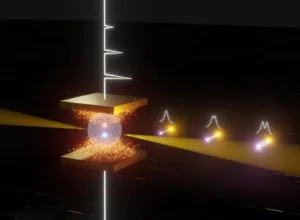Pohang University of Science and Technology (POSTECH) researchers claim to have made a significant breakthrough in the field of ultra-high-resolution spectroscopy, introducing the world to a new era of optical display technology. The team, led by Professor Kyoung-Duck Park and Hyeongwoo Lee, a PhD student, has achieved the world’s first electrically controlled manipulation of polaritons at room temperature.

Polaritons, often described as ‘half-light half-matter’ particles, combine the characteristics of photons (light particles) and solid matter. This unique blend allows polaritons to exhibit distinct properties, differing from both light and matter. The inability to control these particles electrically at room temperature has previously restricted their practical applications.
For displays, polaritons offer a path to surpass current technological limits by enabling ultra-efficient light manipulation. Their mixed light-matter nature can lead to displays with much brighter, more vivid colors and higher resolution, while potentially consuming less energy. Because polaritons can be controlled at very small scales, they allow for precise color control at the level of individual pixels, potentially eliminating the need for separate light-emitting components for each color. This could result in slimmer, more energy-efficient screens with superior performance across all lighting conditions.
The innovative technique developed by POSTECH’s team, named “electric-field tip-enhanced strong coupling spectroscopy,” enables the active manipulation of individual polariton particles. This breakthrough leverages a novel approach to measurement that combines super-resolution microscopy with ultra-precise electrical control. As a result, polariton particles can be stably generated in a state known as strong coupling at room temperature.
The use of polariton particles could eliminate the need for multiple quantum dots in displays, as a single polariton particle can emit light across all colors with enhanced brightness. This property also can be controlled electrically, similar to traditional electronics, marking a significant advancement in the field.
Reference
Lee, H., Whetten, B. G., Kim, B. J., Woo, J. Y., Koo, Y., Bae, J., Kang, M., Moon, T., Joo, H., Jeong, S., Lim, J., Efros, A. L., Raschke, M. B., Pelton, M., & Park, K.-D. (2024). Electrically Tunable Single Polaritonic Quantum Dot at Room Temperature. Physical Review Letters, 132(13), 133001. https://doi.org/10.1103/PhysRevLett.132.133001

